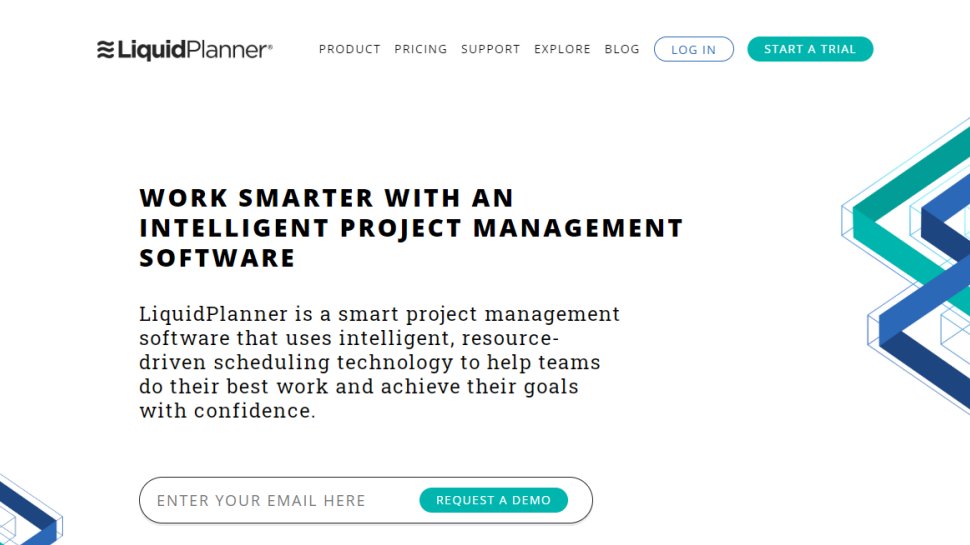TechRadar Verdict
Liquid Planner is a versatile project management platform for large businesses. It’s expensive and complex but offers helpful tools for redistributing work among team members.
Pros
- +
Gantt charts with “baseline” view
- +
Resource-workload reports for task allocation
- +
Plenty of custom fields for tasks
- +
Automated scheduling
- +
Time tracking abilities
Cons
- -
Expensive with five-user minimum
- -
Interface is complicated and slightly outdated
- -
App integration can be complicated
Why you can trust TechRadar
Liquid Planner is extremely powerful project management software for large businesses with a lot of team members. The platform has everything teams need to track projects, but it also goes one step further by helping organizations to manage their human resources. In particular, Liquid Planner reports make it easy to see how to optimally shift workloads around when a new project comes online.
The software is primarily suited for medium-to-large organizations. It’s a complex platform that takes a lot of time to learn, and plans are very expensive. While 2021 ushered in a brand new interface, there is still a steep learning curve for those wanting to dive in.
Plans and Pricing
Liquid Planner offers a wide range of pricing and plan designs, with hopes to catch any and all business model. First up, the free plan. This plan, according to Liquid Planner “allows up to 3 users, 6 resources, 10 projects, and 300 tasks in one workspace.”
The Essentials package is around $15 per month, per employee, if paid for a full year at a time. The Professional Plan bumps up by $10, coming in at $25 per month, per employee, when paid for a full year. Lastly, the Ultimate Plan goes up another $10, coming in at $35 per month, per employee, when paid for a full year at a time.
For the most part, all three packages have the same basic features. Where the difference is noticed is when you get up to the group workload, access roles, and access controls. All of which are only available with the Ultimate plan. There are also a handful of time management features, as well as report customization and more that are only for the higher tiered packages.
All three plans offer unlimited placeholders and modeling resources. However, only the Ultimate Package has unlimited workspaces, tasks, and projects.
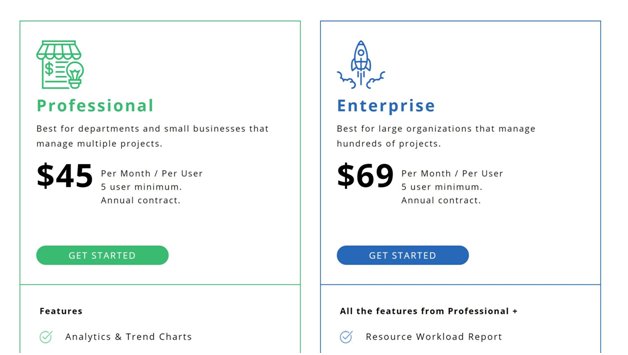
Unlike prior models, as of the 2021 refresh, there is now no minimum user requirement for any package, allowing all three to drop all the way down to only one user.
These plan prices are steep compared to competing project management software. But, the resource allocation functions of Liquid Planner are much more robust than what you'll find in other platforms.
Features
Liquid Planner has an extremely rich feature set that helps to justify the high cost of this platform for larger businesses.
Task Management
Liquid Planner offers a few different ways to look at projects and tasks. The default view is a Gantt chart, although kanban cards are also included. One of the useful features built into the Gantt charts is a “baseline view,” which allows managers to compare a project’s actual task completion timeline to the original estimated timeline. This makes it relatively easy to see when and why a project moves ahead of or behind schedule.
Tasks themselves are very full-featured. It’s simple to add team members as well as deadlines and milestones. Plus, custom fields allow for plenty of leeway in defining the properties that matter for your business’s workflows. The only shortcoming is that you can’t add sub-tasks in Liquid Planner—checklists let you keep track of sub-tasks, but don’t support deadlines or specific team member assignments.
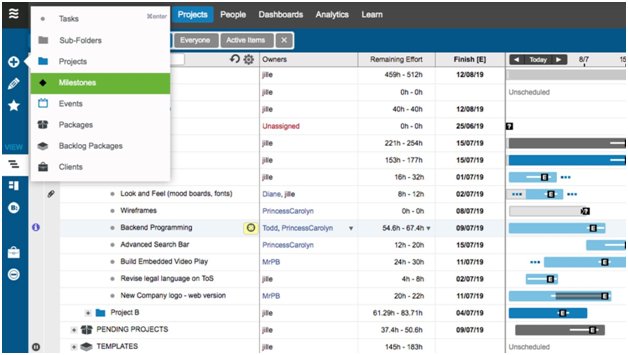
Resource Management
What sets Liquid Planner apart is its built-in functionality for managing users’ time. Employees can input vacation right into the software, and Liquid Planner offers report views to help managers view what tasks will be affected while team members are away. This function is particularly helpful when a new one-off task comes in and a team member is pulled away from an existing project. The software will help you identify which employees have a similar skill set and aren’t tied up on existing tasks.
One nice outcome of Liquid Planner’s resource management tools is that it becomes easy for teams to predict how long projects will take. Users can input the minimum and maximum amounts of time they expect a task to take, and the system will track how long it actually takes. Of course, this same time-tracking tool can be used for billing clients and tracking productivity among employees.
All of these functions are tied into a priority system that allows managers to decide what tasks need the most resources. Liquid Planner will automatically adjust project time estimates when task priorities are shifted around, as well as help managers identify which employees are being overloaded with work.
App Integrations
Unfortunately, Liquid Planner doesn’t make it particularly simple to integrate your company’s other business software tools. The platform can automatically import data from calendar apps and attachments from cloud storage services. But, integrating with sales and marketing tools like Salesforce and Zendesk is a lengthy and complicated process.
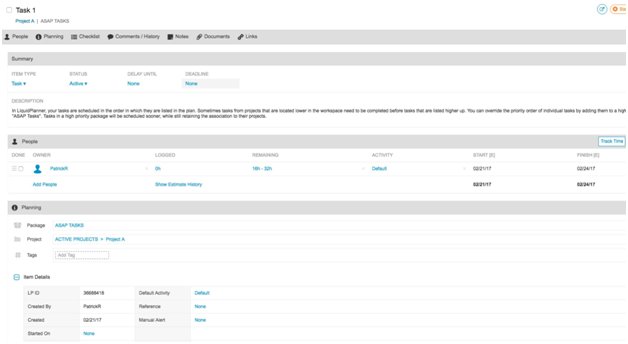
Interface and In Use
Liquid Planner’s interface was updated in 2021, along with the majority of the programming. While this program used to be quite dated, now it seems more fitting in the 21st century.
Getting started with Liquid Planner is also something of a commitment. It takes a while to set up custom fields for your business, and the sheer number of display options for custom dashboards can be a little overwhelming. Figuring out how to best use the resource-workload reporting for your team is also a bit of a trial-and-error process.
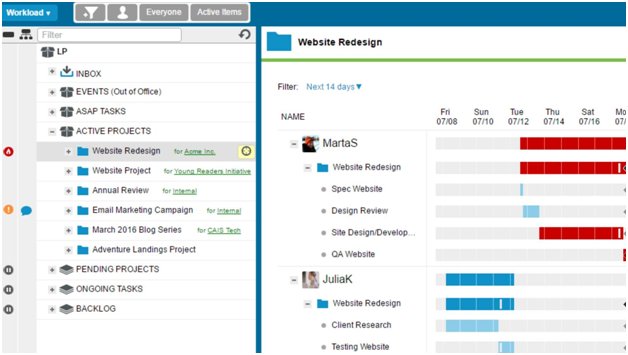
Support
The team behind Liquid Planner recognizes that its product requires a steep learning curve. Liquid Planner’s website has a massive trove of documentation videos that walk managers through everything from getting started to advanced customization and app integration.
If you need help with something after setup, Liquid Planner’s customer service team is available Monday to Friday by email, phone, or live chat.
The Competition
The high price of Liquid Planner somewhat limits it to use by large companies with big budgets for project management. Zoho Projects and Workfront are both less expensive and offer a much wider range of app integrations. However, you’ll lose out on the resource management features of Liquid Planner with most other project management tools.
Final Verdict
Liquid Planner is a very adaptable project management platform with a focus on helping your business manage employee workloads. The software is difficult to get started with, but it offers a ton of power for optimally distributing work across multiple projects and large teams.
The 2021 update helped keep Liquid Planner on the map, in both pricing and abilities. Additionally, the updated software all around made utilizing this complex program a bit easier to understand, and more enjoyable to use all around.
Michael Graw is a freelance journalist and photographer based in Bellingham, Washington. His interests span a wide range from business technology to finance to creative media, with a focus on new technology and emerging trends. Michael's work has been published in TechRadar, Tom's Guide, Business Insider, Fast Company, Salon, and Harvard Business Review.
